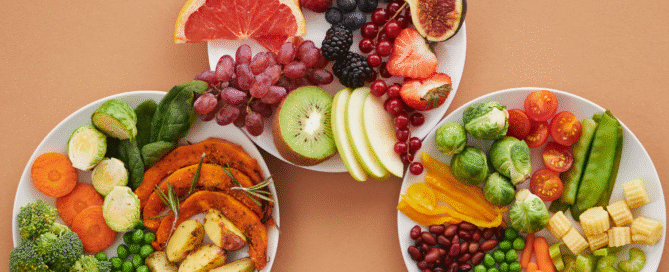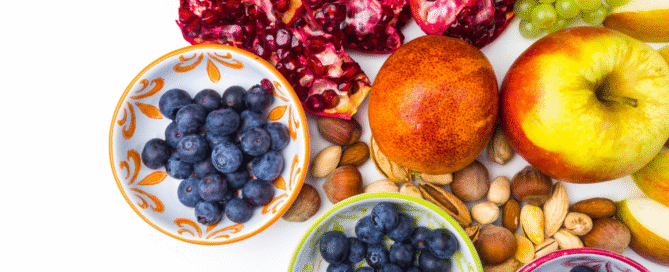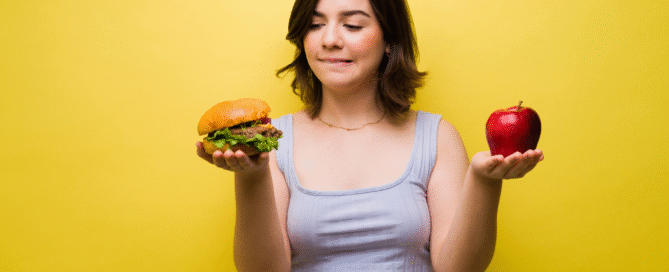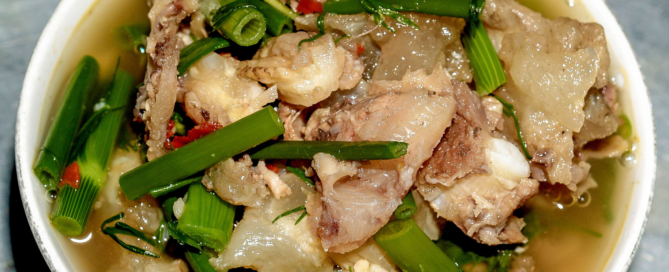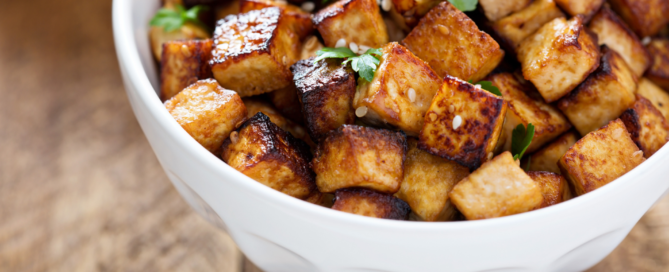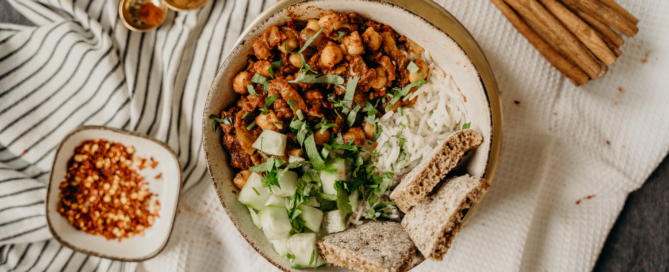How to Add Colour to Your Diet: A Guide to Nutrient-Rich Foods
Incorporating a variety of colors into one’s diet can significantly enhance both nutrition and enjoyment of meals. Eating a rainbow of fruits and vegetables ensures a diverse intake of vitamins, minerals, and antioxidants, contributing to overall health. By focusing on colorful options, individuals can improve their well-being while also enjoying visually appealing dishes.
Many people can benefit from simple strategies to add more color to their plates. For example, incorporating red tomatoes, green spinach, and purple eggplant not only boosts nutritional value but also makes meals more enticing. Exploring seasonal produce can further inspire creativity and variety in daily meals.
The act of adding color goes beyond just aesthetic appeal; it’s about making healthier choices. Engaging with colorful food options can lead to increased satisfaction and motivation to maintain a balanced diet. This approach facilitates a more enjoyable eating experience while promoting essential nutrients needed for a healthy lifestyle.
The Importance Of Colour In Your Diet
Incorporating a variety of colors into one’s diet is vital for enhancing nutrition and supporting overall wellness. Colorful foods are packed with essential nutrients, phytochemicals, and antioxidants that play a significant role in disease prevention.
The Role Of Colourful Foods In Nutrition
Colourful foods often signify a rich array of nutrients. For example, leafy greens like spinach contain vitamins A, C, and K, while orange foods such as carrots are high in beta-carotene. These nutrients support vital bodily functions and enhance immunity.
Many fruits and vegetables are also sources of phytochemicals, which help to combat oxidative stress. For instance, the anthocyanins found in blueberries may assist in reducing inflammation. Consuming a spectrum of colors ensures that individuals obtain diverse vitamins and minerals necessary for health.
How Dietary Variety Supports Wellness
Eating a variety of colorful foods can play a key role in maintaining a healthy diet and managing weight. Different colors often correlate with distinct nutritional profiles, promoting overall wellness. For example, darker vegetables are typically higher in fiber, aiding digestion and satiety.
Research suggests that a meal high in color diversity can lead to better health outcomes. According to the American Heart Association, a varied diet can help reduce the risk of heart disease, obesity, and diabetes. Thus, embracing a wide array of colorful foods can significantly benefit long-term health.
Link Between Colourful Diets And Disease Prevention
There is a notable link between colorful diets and reduced risk of chronic diseases. Consuming a wide range of fruits and vegetables can lower the risk of heart disease, diabetes, and certain cancers. Foods like tomatoes and red peppers contain lycopene, which is associated with a lower incidence of prostate cancer.
Research has shown that those who adopt a colorful diet tend to have lower obesity rates and better overall health markers. Phytochemicals in vibrant foods contribute to disease prevention by promoting cellular health. Prioritizing colorful foods can be a simple yet effective method for maintaining health and preventing illness.
Types Of Colourful Foods To Add
To enhance dietary variety and nutrient intake, incorporating a range of vibrant foods can significantly contribute to overall health. The following sections outline specific categories of colorful foods that can be easily added to meals.
Adding More Fruits And Vegetables
Fruits and vegetables are rich in vitamins, minerals, and antioxidants. Incorporating a spectrum of colors ensures a variety of nutrients.
- Red: Tomatoes and bell peppers are excellent sources of vitamin C and lycopene.
- Orange/Yellow: Carrots and sweet potatoes provide beta-carotene, beneficial for eye health.
- Green: Spinach and broccoli are loaded with iron, calcium, and fiber.
- Blue/Purple: Blueberries and eggplants are rich in antioxidants, supporting brain health.
Adding these to salads, smoothies, or as snacks helps increase daily intake of vital nutrients.
Incorporating Whole Grains And Legumes
Whole grains and legumes offer fiber, protein, and essential micronutrients. Opting for a variety of these foods can enhance dietary color and nutrition.
- Whole Grains: Quinoa, brown rice, and farro add textures and a host of B vitamins.
- Legumes: Lentils, chickpeas, and black beans provide plant-based protein and fiber.
These foods can be integrated into salads, stews, or as side dishes, enriching both the color and nutritional profile of meals.
Power Of Herbs And Fresh Produce
Herbs and fresh produce not only add flavor but also vibrant colors to dishes. They play a crucial role in a colorful diet.
- Basil: This aromatic herb adds a rich green hue and enhances flavor.
- Parsley: A garnish that brightens many dishes and offers vitamins A and C.
- Cilantro: Gives a burst of freshness and complements various cuisines.
Using these herbs can enhance culinary creativity while boosting nutrition. They can be sprinkled on salads, mixed into sauces, or used as garnishes to elevate the visual appeal of meals.
Nutritional Benefits Of Different Colours
Foods come in a variety of colors, each providing unique nutritional benefits. Understanding these differences can help individuals maximize their health through a more vibrant diet.
Red Foods And Antioxidant Power
Red foods, such as tomatoes and strawberries, are rich in antioxidants, particularly lycopene and vitamin C. Lycopene has been linked to reduced risk of certain cancers and heart disease.
Strawberries also offer immune support due to their high vitamin C content. Including red foods in the diet can help combat oxidative stress and promote overall health.
Yellow And Orange Foods For Vitamins
Yellow and orange foods, including carrots and bell peppers, are high in beta-carotene, which the body converts to vitamin A. This vitamin is essential for good vision, skin health, and immune function.
Citrus fruits like oranges and lemons provide abundant vitamin C, vital for collagen production and antioxidant protection. Eating a variety of these colorful foods enhances vitamin intake and adds flavor to meals.
Green Foods For Minerals And Folate
Green foods such as spinach and cucumbers are excellent sources of minerals like potassium and magnesium. Spinach also contains folate, crucial for cellular function and tissue growth.
These foods support heart health and can help reduce blood pressure. Incorporating green vegetables into daily meals promotes a robust nutrient profile.
Purple Foods And Anthocyanins
Purple foods, including blueberries and eggplants, are high in anthocyanins, which are powerful antioxidants. These compounds are known to enhance heart health and improve cognitive function.
Blueberries, in particular, have been studied for their potential role in reducing inflammation and supporting brain health. Adding purple foods to the diet offers unique benefits that contribute to overall wellness.
Easy And Delicious Ways To Add Colour
Incorporating more vibrant colors into daily meals enhances not only visual appeal but also nutritional value. Here are practical approaches to achieve this through creative salads, the culinary use of herbs, and helpful tips for maintaining color.
Creative Salads And Bowls
Colorful salads are a great way to include a variety of vegetables. Mixing ingredients such as red bell peppers, purple cabbage, and orange carrots can create an eye-catching and nutrient-rich dish.
- Greens: Start with a base of dark leafy greens like spinach or kale for heart health.
- Toppings: Add cherry tomatoes, cucumber, and avocado for texture and color.
- Dressing: Use a simple lemon and olive oil dressing to enhance flavors without overpowering.
Using a variety of textures and colors not only makes salads visually stimulating but also maximizes the intake of vitamins and minerals. Experimenting with different combinations can lead to tasty results.
Culinary Use Of Basil And Parsley
Fresh herbs like basil and parsley are excellent for adding both color and flavor to meals.
- Basil: Its vibrant green leaves can brighten up pasta, pizzas, and salads. Pesto made with basil brings a vivid color and a burst of flavor.
- Parsley: Often used as a garnish, parsley can complement dishes such as soups and grains. It provides a fresh taste and enhances visual appeal.
Incorporating these herbs into everyday cooking boosts not only aesthetic value but also the nutritional profile of meals. They are rich in antioxidants and can support heart health.
Tips For Maintaining Colour In Daily Meals
To keep meals colorful, it is essential to select a broad spectrum of fruits and vegetables. Here are some effective tips:
- Seasonal Choices: Use seasonal produce like strawberries and zucchini to ensure freshness and vibrant colors.
- Cooking Methods: Opt for steaming or sautéing instead of boiling, preserving color and nutrients.
- Presentation: Place colorful ingredients on contrasting platters to enhance visual appeal.
These strategies help create visually appetizing meals that provide a variety of nutrients. Regularly incorporating colorful ingredients can lead to a more balanced diet.
